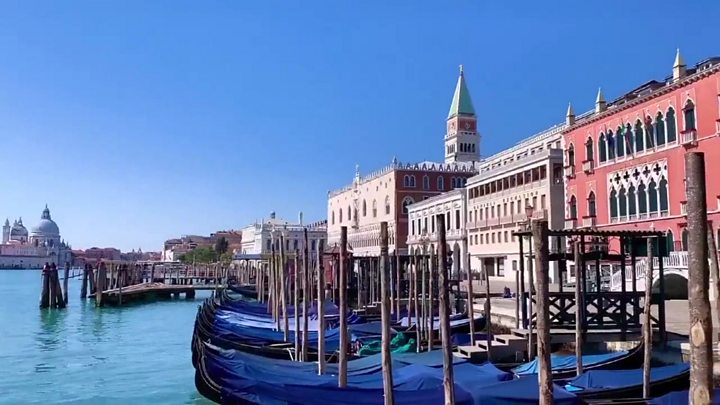How To See The World Without Leaving Your House
Airlines around the world have grounded their flights. Countries have shut their borders, and ordered everyone indoors.
The age of coronavirus has restricted our movement in every way, but it doesn’t have to restrict our imagination. Here are 10 ways you can still see the world – all through the wonder of the webcam.

1) Elephants in South Africa
This live feed comes from a watering hole at the Tembe Elephant Park, close to South Africa’s border with Mozambique. Most of the time, there will be at least a few elephants milling about – and the ones living her are reportedly the world’s largest.
Every now and then, you might catch leopards, lions, rhinos and buffalo popping in for a drink. And those small antelope you see are called sunis.
(Random fact: Elephants can’t jump.)
2) Times Square, New York City
Perhaps one of the busiest places in the world in normal times, now the heart of Manhattan is eerily quiet as the city deals with close to 50,000 confirmed coronavirus cases.
The bright adverts in Times Square now promote shows no-one can attend, clothes no-one can buy and cities no-one can visit.
3) Lapland
This might win a prize for the most remote live-stream of all – the 360-degree footage comes from the deep snow of northern Finland, above the Arctic Circle.
Normally, the small forested village of Köngäs would host tourists lapping up the mythology of northern Finland, and its mysterious elves.
But these days, it’s even more peaceful than usual.
4) A Thai beach
This is the feed to watch if you want to relax with a spectacular sunset every day.
The feed comes from a secluded white beach on the island of Koh Samui, in Thailand, were people appear to be practising social distancing in a really satisfying way.
The sun sets there at about 18:30 local time (12:30BST) these days.
5) The northern lights
Coronavirus might be nature acting at its most aggressive, but this is nature at its most peaceful.
This live feed comes in from Manitoba province, in Canada. If you visit it while it’s night-time there, you’ll see the aurora borealis in full flow, as our planet’s magnetic field interact with charged particles from the Sun.
We’re just out of the prime northern lights season at the moment, but it’s still pretty spectacular. There were swirls of green in the sky when we checked on Thursday.
(Random fact: other planets including Neptune and Saturn also have auroras.)
6) Venice
One of the world’s most beautiful and most visited cities is shut.
Italy has seen the worst of the coronavirus outbreak, and no country has reported as many deaths. As a result, Venice and the rest of the country has been under strict lockdown measures for weeks.
As the live feed of various sites in Venice shows, the paved streets are quiet and the canals calm. So calm, in fact, that they are clearer than ever.

7) Gorillas in Africa
This feed – which operates day and night – shows gorillas doing what gorillas do best, at the GRACE gorilla conservation centre in the eastern Democratic Republic of the Congo.
This is where about 300 eastern lowland gorillas live – about 8% of the world’s total – and it won’t take long to see one on camera. This live stream is one of many maintained by explore.org
(Random fact: Gorillas share 98% of humans’ genetic code.)
8) Tokyo
Much like New York’s Times Square, the Shibuya crossing in Japan’s capital would normally be one of the busiest junctions in the world. It’s quieter at the minute, but not deserted. And as this feed shows, people are doing a good job of keeping their distance from one another.
9) Norway by train
OK, this is not technically a live stream – it’s a series of long pre-recorded videos spliced together, showing a scenic train journey between Bergen and Oslo.
It doesn’t matter. As the train snakes past fjords, lakes and forests in the snow, it’s incredibly calming.
10) Space!
This is maybe the most spectacular live stream of them all. It comes from the International Space Station, which is travelling at about 17,000mph (27,300km/h) above our heads (and which you may have seen on a clear night).
You’ll witness a sunrise or sunset roughly every 45 minutes, and play a guessing game of “which country is that I’m flying over?”
The live feed is available only when the space station is in contact with Earth – there’s an occasional loss of signal, but they’re not that common.


